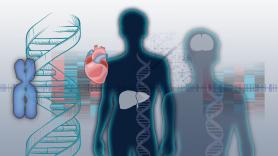3. Understanding Molecular Architecture
The final message of DNA, the information it contains, is a blueprint to manufacture proteins, the bricks and workers of cells. Cecilia Lindskog is a researcher at the University of Uppsala, Sweden, and a member of the Human Protein Atlas, a parallel initiative with ties to GTEx that aims to establish a map, even if temporary, of the proteins present in each of our tissues. Some of their conclusions show that, in addition to the fact that "half of all genes are expressed in proteins in every type of tissue in the body, there are many proteins exclusive to only one tissue." And what could be most important, "many proteins that could be drug targets are found in all of them."
On the road to proteins, the GTEx project can help untangle part of the complex world of DNA regulation. For example, part of the dark genome is made up of "switches", regions that activate or block genes from being read. Many studies have estimated that there are up to 400,000 all over the genome, but as explained Simon Fishilevich, a student at the Weizmann Institute of Science in Israel, "These tasks have led to many contradictions and redundancies." His team is trying to refine these results by combining data from different archives. And by tying switches to the genes they act on, as their function in many cases isn't yet known. Mutations in some of them, for example, are behind genetic diseases like polydactyly ('extra' fingers or toes) or cases of congenital, untreatable diarrhea.
"The regulatory elements (the switches) are distributed according to a modular architecture, grouped together but separate," concluded Emmanouil Dermitzakis, professor at the University of Geneva and one of the leaders of the GTEx project. What is curious is that they are associated with target genes that can be near, far or even on different chromosomes, "as if they were speaking."
But how and how much do they speak? In which tissues? What happens when there are variants? How does the conversation change? This is why GTEx was created. Although, as explained Ayellet Segré, researcher at the Broad Institute in Cambridge (Massachusetts), so far we only know about the visible part of the iceberg.



